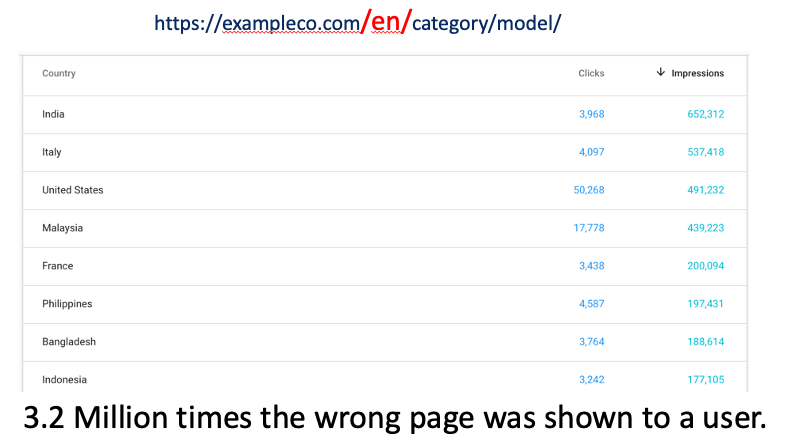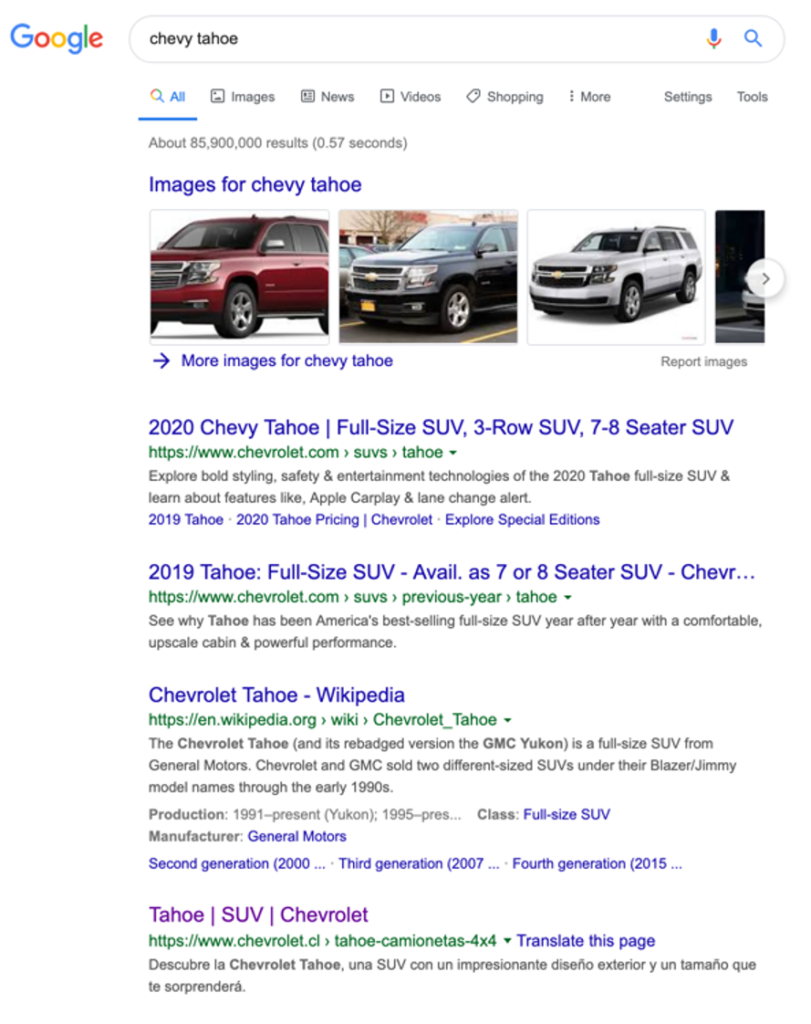The primary benefit of using the hreglang element on your site is to improve customer interaction and increase e-commerce revenue. It helps give you peace of mind that Google is presenting the local market page to the correct audience.
When we dig into the problem we find cases like the one illustrated in the screen capture that demonstrates the revenue destroying impact of the problem. In this case, we used Google Seach Console’s filtering on a product name for a keyword and the page that was presented most frequently. That page was their “Global English” that was to be shown in markets where they did not have a local site. Due to the global nature of the page, it did not have a price or any purchase options just the information about the product.
This page, over the course of a month, was shown to visitors 3.2 million times. In all of the markets represented, there was a local market page.

Maximize Clicks from SERPS
This problem is rarely associated with a lack of hreflang is the poor click rate. If we look at India, a search for this model of product ranks the global English page #1 in local search results showing to searchers of 650,000 times but received less than 4,000 clicks.
Let’s simplify this problem – 650k searchers wanted to know about this product by name, the brand site ranked #1, but only 4k clicked into the page. That means they went to another site to get information or to purchase. What if just 10% would click that is an additional 61k visits to the site for a single product.
Once the hreflang element was implemented, this global page was replaced with the local market pages in their respective markets. In India specifically, this resulted in a 58% click rate up from .61%. The unfortunate reality is these global English pages were often some of the first pages found by Google as they were the original site so they have a lot of equity and history built into them. Especially when the query is in English this page has all the SEO attributes to rank over the local market page.
This problem is acute specifically with brand name queries. In the screen capture below (done in Santiago Chile) it shows a search for the Chevy Tahoe and the first two sites are for US sites. Just looking at the titles one might argue they are over optimized for the phrase. At the bottom of the capture we see the local market page on a ccTLD of .cl and the description is in Spanish but since this page was not set to represent Chile, the “more relevant” pages were ranked higher. This resulted either a lack of clicks into both sites, an increase in paid listings, or a required to find the local market site. In any case, there is significant missed opportunity.

The unfortunate reality is these global English pages were often some of the first pages found by Google as they were the original site so they have a lot of equity and history built into them. Especially when the query is in English this page has all the SEO attributes to rank over the local market page.
Minimize Bounce Rates & Cart Abandonment
We get a lot of users that come to us complaining they get a lot of traffic to their site but not a lot of sales. In this same case above, of those that did click into the page, nearly 98% bounced out of the page. There were a few that clicked the global locator when they could find it buried in the footer. As we looked into analytics 100% of the bounces from this page were from countries that had a local version of the page.
Again, deploying hreflang replaced the global page with the correct page. In one case for a global electronics company this simple swap of pages increased revenue over $8 million dollars.
Global Error Detection & Mitigation
Digging into hreflang problems often uncovers other errors that went undetected. There are some global sites that use IP detection to try to fix hreflang probmes by redirecing users. In some cases they redirect them to the wrong country version and make it impossible, even through navigation to get to where they want to go.
We find other cases where XML site maps are broken or incomplete of where the internal mappings of pages are incorrect. The mitigation of any of these issues will not only increase traffic but conversions as well.

